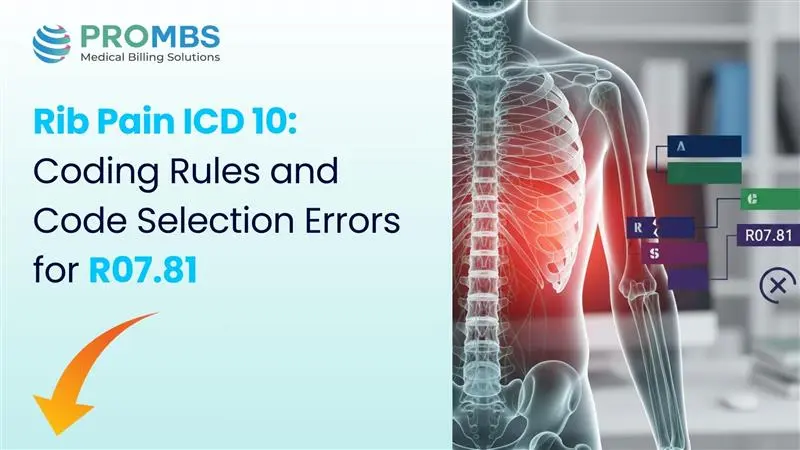Denial management tactics begin before a single claim leaves your billing queue. Every missed code, vague note, or unchecked authorization can start a chain reaction. Do you see denial spikes that don’t follow a pattern? That’s the chaos most multi-specialty practices face. Different departments. Different rules. Different payer quirks.
It’s no wonder claims bounce back faster than you can track them. The truth is simple. Complexity without structure bleeds revenue. The fix is a denial management system that runs on rhythm, clean data, clear roles, and constant feedback. It turns red flags into paid claims. HFMA reminds us that 65% of denied claims are never resubmitted. That number alone should light a fire under every billing manager.
Why Denials Hit Multi-Specialty Practices Hard
Multi-specialty practices walk a coding tightrope every day. Orthopedics, cardiology, gastroenterology, behavioral health, each has its own CPT logic and payer nuances. A single modifier error can derail an entire revenue stream. CMS data shows that improper coding and documentation gaps account for most denials. Missing links between diagnosis and procedure codes lead payers to assume "medical necessity not met." That’s often not true. It’s just undocumented.
Here’s the reality. One weak department can pull down everyone else. When a gastro team skips post-procedure documentation, or a mental health note lacks measurable goals, the denial count rises for the entire group. What’s the best way to stop this chain reaction? Start where the data points, not where assumptions lead.
Multi-specialty groups also face another enemy: inconsistency. Each payer plays by its own rules, its own edits, its own version of what "covered" means. What one insurer approves, another rejects without blinking. Front-line teams spend hours running after clarity that should have existed from the beginning. Coders second guess modifiers, doctors rewrite notes, and cash flow stalls in limbo. CMS and AMA guidelines offer structure, but every payer twists the details just enough to cause trouble. The cure is unity. Standard templates. Shared references. Real-time updates that speak the same language across every specialty. When everyone codes and documents to one rhythm, denials lose their power.
Identify Root Causes with Data Analytics
Numbers never lie, but you have to know which ones to watch. Data analytics can uncover denial patterns invisible to the naked eye. Use RCM dashboards to break denials down by payer, reason code, and specialty. For instance, 30% of orthopedic denials may come from modifier misuse. Cardiology often suffers from missing pre-authorization. Behavioral health usually struggles with documentation gaps.
These are not random. They’re signals. So what’s the best way to use those signals? Create a monthly denial summary report across departments. Rank top reasons, assign owners, and track repeat offenders. Tie it all to CMS reason codes for consistency. Over time, you’ll spot denial roots before they sprout.
Build a Standardized Denial Management Workflow
A scattered process breeds confusion. A structured workflow brings control. Start by funneling all denials into a centralized work queue. One place. One rhythm. Each denial follows the same path. Capture, categorize, correct, resubmit, track. No more guessing. No more duplicate fixes.
What’s the best turnaround window? 48 to 72 hours for correction. Anything longer and your A/R starts bleeding. Build a playbook every staff member can follow. Label each step with who, what, and when. CMS recommends clear accountability chains for post-denial actions, not vague "someone will fix it" tasks.
Train Teams for Specialty-Specific Documentation
Documentation is your first defense and your fastest failure point. Each specialty needs its own playbook. Therapy notes should show time logs and progress measures. Gastroenterology reports should outline findings and pathology details. Behavioral health notes must link session content to measurable outcomes.
What’s the best way to train without overwhelming your team? Use short, focused micro-sessions. One topic per meeting. One specialty at a time. Follow AMA’s CPT documentation standards and payer LCD/NCD guidelines. Training based on actual denials, not hypotheticals, cuts future rework by almost 40%, according to industry studies.
Automate Eligibility and Pre-Authorization Checks
Front-end errors fuel back-end denials. One missed eligibility check, one skipped authorization, and your clean claim turns into a rejection notice. It happens quietly, long before the billing team ever sees the claim. Automation stops that loop before it starts. Smart tools can verify eligibility, coverage limits, and pre-auth status in real time while the patient is still at the front desk. No waiting, no guessing, no phone tag with payers.
Imagine your scheduler catching a plan change the moment a patient checks in. Or your EHR alerting staff when a service needs prior approval before it’s performed. That’s the kind of control automation gives you. CMS supports this approach through real-time EDI transactions (270/271), designed to confirm coverage instantly. When your system runs those checks automatically, denials from eligibility gaps disappear. Efficiency replaces error, and revenue stays in motion.
Real-time eligibility checks (EDI 270/271 transactions) are CMS-endorsed and reduce preventable errors dramatically. Imagine your front desk catching coverage lapses instantly instead of discovering them weeks later. What’s the best way to make automation stick? Set hard stops in your EHR. No appointment or claim submission without verified eligibility. It’s simple, effective, and error-proof.
Did You Know?
CMS estimates that nearly 90% of claim denials can be prevented with stronger front-end accuracy, while HFMA reports that about 65% of denied claims are never appealed. Most rejections do not come from complex rules but from small, avoidable errors like missing authorizations or incomplete notes. Each one represents lost revenue that could have been saved with a single alert or quick verification. That is why strong denial management tactics matter. They stop problems before they start and keep your revenue flowing.
What is the Best Way to Monitor and Report Denial Trends
Numbers tell the story. Reports make it visible. Weekly reports show progress. Monthly reports show performance. Both matter. The key metrics include denial rate percentage, first-pass resolution rate, appeal success rate, and average days to resubmit. Compare your data to benchmarks from HFMA and CMS. A healthy practice stays below a 5% denial rate and above a 95% clean-claim rate.
Example Table: Top 5 Denial Reasons by Specialty
| Specialty | Top Denial Reason | Practical Fix |
|---|---|---|
| Orthopedics | Modifier misuse | Add prompts in EHR |
| Cardiology | Missing pre-auth | Automate verification |
| Gastroenterology | Incomplete notes | Add structured templates |
| Behavioral Health | Invalid diagnosis | Update ICD mapping |
| General Medicine | Eligibility errors | Run real-time checks |
Strengthen Payer Communication and Appeals
Not every denial is final. Strong communication turns rejection into reimbursement. Keep payer contact logs. Note dates, reps, and next actions. Use appeal templates tied to payer rules and medical necessity logic. A clear, data-backed appeal letter supported by corrected documentation can overturn up to 50% of denials.
What’s the best appeal strategy? Speak the payer’s language. Reference CMS coverage rules, quote AMA code definitions, and use the same reasoning they apply internally. It’s not emotion that wins appeals. It’s precision.
Why Should You Audit and Improve Continuously
Every quarter, audit your denial data. Not to find fault, but to find leverage. Audit by payer, by code, by team. Are the same mistakes returning? Then your fix wasn’t a fix. Are denials shrinking in one specialty but not another? Adjust training and automation.
Tie audit results to staff KPIs and workflow updates. According to OIG and CMS compliance guides, internal audits improve recovery rates and lower risk when done consistently. Pro tip: Keep audits short and sharp. A ten-claim sample per specialty tells you far more than a thousand random checks.
How Pro-MBS Helps Multi-Specialty Practices Reduce Denials
Pro-MBS uses these denial management tactics at scale. We blend analytics, staff training, and workflow automation into one system that works. The result is cleaner claims, faster payments, and a 30% drop in denial volume. Every step aligns with CMS compliance standards and AMA coding guidance.
What’s the best way to begin? Start small. Choose one specialty, one service line, one measurable target. Track your baseline denial rate, correct the causes, then repeat the process in the next department. As results compound, you build momentum that spreads naturally across the organization. With Pro-MBS, perfection isn’t the goal. Progress is. Step by step, denial pressure fades, payments arrive faster, and your revenue cycle becomes steady, predictable, and strong.
FAQs
What does multi-specialty mean?
Multi-specialty refers to healthcare groups that bring several medical specialties under one organization. These setups need structured denial management tactics to coordinate billing across departments and maintain clean, compliant claims.
What is RCM denial management?
RCM denial management means identifying, analyzing, and resolving claim denials to protect revenue. For multi-specialty practices, it involves using denial management tactics like automation, data analytics, and payer-specific workflows to reduce errors and recover payments faster.
How to handle inclusive denial?
Inclusive denials happen when multiple services are bundled into one payment. Effective denial management tactics include reviewing payer edits, using correct modifiers, and resubmitting claims with clear documentation that proves each service’s necessity.
What are the three different types of claim denials?
The main types are soft denials, hard denials, and clinical denials. Strong denial management tactics help address each one through coding accuracy, eligibility verification, and proactive documentation that prevents repeat errors.
What do you mean by multi specialist?
A multi specialist is a provider who works within a multi-specialty group, often collaborating with other specialists. Coordinated denial management tactics ensure all documentation aligns, reducing claim confusion and improving reimbursement consistency.
What is a multispecialty unit?
A multispecialty unit combines different specialties like orthopedics, gastroenterology, and behavioral health within one clinical and billing structure. Standardized denial management tactics help unify coding, streamline workflows, and maintain a high clean claim rate.
What is a multispecialty clinic?
A multispecialty clinic houses several specialty services operating under one billing and RCM system. Data-driven denial management tactics reduce claim rework, boost first-pass resolution, and ensure faster payments for all specialties involved.



